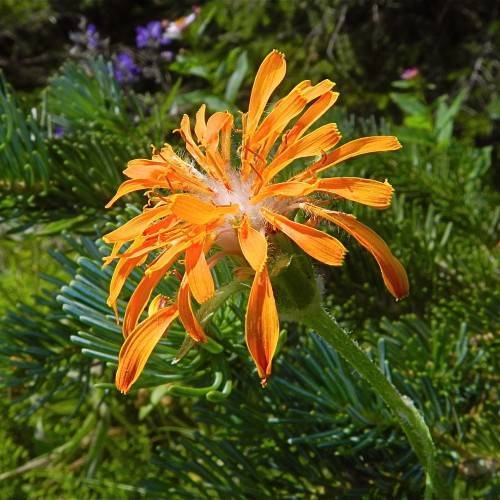
Orange Agoseris
Agoseris aurantiaca
Watering:
Average
Hardiness Zone:
5
Flowers:
Flowers
Sun:
Sun, Partial Shade
Soil:
Clay, Sand, Loam
Leaf:
Yes
Growth Rate:
Low
Drought Tolerant:
Yes
Care Level:
Medium
watering
Purple Giant Hyssop should be watered thoroughly once or twice per week depending on temperature and soil moisture. If the temperature rises, the plant should be watered more often. If the temperature stays low, then once per week should be sufficient. Soil should be allowed to dry out between watering sessions. If the soil is consistently wet, it can lead to root rot. During the summer months, it is a good idea to mulch the soil around the plant to help with water retention.
sunlight
Purple Giant Hyssop (Agastache scrophulariifolia) is a sun-loving plant that thrives in full sun. It prefers at least 6-8 hours of direct sunlight per day and should be planted in a location that receives direct sun for most of the day. During the hottest part of the day, the plant may benefit from some protection from the sun's rays, such as a partial shade cloth or tree branches. In the winter months, Purple Giant Hyssop can withstand some full shade, but it should receive at least 4-6 hours of direct sunlight.
pruning
Purple Giant Hyssop (Agastache scrophulariifolia) should be pruned back in early to mid spring once new growth has started. Prune back any dead or straggly stems and any flower spikes that have already bloomed. This will help to create a bushy and healthy plant with more compact growth and encourage more flowers. Flip the plant over and snip off any dead stems from the bottom of the plant as well. For best results, do not prune more than 1-third of the plant at any 1 time.
